The Prime Minister has consistently called Left Wing Extremism (LWE) as India’s greatest internal security threat. The threat assessment however, differs sharply from response realities. For over a decade, the Indian nation state has seriously underestimated the Maoist threat and under-resourced the battle against this grave menace. In the Shivraj Patil era, a concerted attempt was made to assert that such a threat simply did not exist. This Ostrich Syndrome led to a decade of neglect which has been fully exploited by the Maoists to consolidate their strength in a manner that is now truly a cause for alarm. It was only the present Home Minister’s most courageous decision to tackle the Maoist menace head on that led to a series of probing actions by the Police and Paramilitary forces in West Bengal, Chattisgarh and other states. The disasters suffered by the CRPF in Dantewada have served to highlight the enormity of the Maoist threat about which the Indian State was in total denial till just two years ago. The present home minister took a courageous non-partisan and nationalist stance (despite egging on by some elements of his own party to step back and blame the opposition State Governments and make political capital out of a looming national disaster). Like the initial probing attacks against the intruders in Kargil, we may have taken inordinately high casualties but these probing attacks have served to find and fix the enemy and give us a very rude indication of the menacing growth in Maoist military power. Operation Green Hunt has been a serious wake up call – one which we can ignore only at our own peril. It should not have taken Operation Green Hunt for us to see the writing on the wall. The Maoist threat seeks to destroy India’s constitutional democratic polity, degrade its armed forces through illegitimate armed groups and seize power to establish a so-called dictatorship of proletariats. A discredited and discarded ideology that has dismally failed all over the World (and in specific in Russia and China itself) is sought to be imposed on India. The remedy would be far worse that the “capitalist disease” it seeks to cure. It would be a civilisational catastrophe that would radically transform the Indic civilization from its traditional spiritual and mystic outlook and its innately democratic and pacifist orientation to an atheist- materialist ideology and a Maoist militaristic vision that is inordinately blood thirsty.
The Maoist Blue print for Seizing the State
In 2003-2004 the former Peoples War Group (PWG) and the Maoist Communist Centre(MCC) held a series of confabulations to work out their merger. Their Central Committees met five to six times to exhaustively discuss a seminal document, a blue print for seizing power in India. This document was finalized in Sep 2004, coterminous with merger of two front running left extremist groups with CPI(M) and is called “Strategy and Tactics for the Indian Revolution”. It is a riveting document that lays out a comprehensive road map for the Maoist design to overthrow the Indian State. The document is remarkable for its insights into the politico-military situation in India. In 2004 it had clearly anticipated the weak kneed and confused response of the Indian State and drawn up plans to strike back in isolated battles of annihilation, destroy the security force “mouthful by mouthful” (as it has in Dantewada) while the State would dither, debate and discuss whether a military response was at all necessary and the Maoists were not simply “Ghandians with Guns”. They are methodically exploiting tribal angst to create Base areas for a so-called long term revolution that will overthrow the Indian democratic State. The document written in 2004 is surprisingly accurate in its anticipation of the Indian state’s half-hearted responses and the situation that obtains today. The truth is easily ascertained by going through this original Maoist strategy document. It is worrisome in its import and its contents must be urgently disseminated in the media and public discourse to alert the nation about the true nature and existential scope of the Maoist threat.
The Document
“Strategy and Tactics for the Indian Revolution” was finalized in 2004 and constituted a cogently analysed road map/Blue print for unleashing a so-called Red revolution in India. A simple citing of some excerpts from this chilling document should serve to highlight the clear and present danger that we have underestimated so grossly for so long.
This document is divided into 13 chapters. Chapter 6, 7 and 10 clearly define the Maoist Strategy and long term perspective plan and merit serious study and analysis.
Maoist Objectives Chapter Six highlights “The central task of the Indian Revolution is the seizure of political power. To accomplish this, the Indian people will have to be organised in the People’s Army and will have to wipe out the Armed Forces of the Counter revolutionary Indian State and establish in its place their own state.”
This plan to destroy the Indian Armed Forces needs to be factored in by the military strategists, while designing a response. There is a widespread feeling in the Indian Armed Forces that this is not a secessionist movement and hence the Army may not be needed to deal with it. It is, in fact, far worse – it seeks to overthrow the Indian state itself. In doing so, it seeks to enlist the support of secessionists in J&K and the North East.
Assessment of the setting It is important to analyse how the Maoists assess the holistic strategic setting of India. Chapter Six of this document states “Our country is a prison house of nationalities, where some nationalities are engaged in a bitter struggle against the Indian state to achieve their right of self determination.” In 2004 itself the Central Committee of the Maoists had correctly forecasted the constraints of the Indian state in employing military forces against the Reds.
“The strength of the Armed Forces of the reactionaries is quite inadequate in the vast country, and communication system makes it quite inconvenient for the quick movement of the enemy forces.”
“A large part of the remote countryside, most advantageous for the establishment of Red liberated areas from the geographical and military point of view, is inhabited by the discontented and agitated nationalities and tribes who are engaged in bitter armed confrontation with the Indian state.”
“Hence it becomes imperative for the enemy’s armed forces to be deployed in large numbers in even wider areas to contain the armed struggle waged by the various nationalities. Lakhs of enemy armed forces have been deployed since long in Kashmir and the North Eastern states.”
The guideline document continues, “As a considerable part of the enemy’s armed forces will inevitably be engaged against the growing tide of struggles by various nationalities, it will be difficult for the Indian ruling classes to mobilize all their armed forces against our revolutionary war.”
The document states, “We are presently in the phase of Strategic Self Defence. At present, the revolutionary movement is advancing in a vast belt of peoples war encompassing the extensive areas of Danda Karanya, Jharkhand, Andhra, Bihar-Orrisa border, North Telangana and Koel-Kaimur. We will be able to build these areas into contiguous areas of armed struggle with each area influencing the other.”
Considering that this was written in 2004, it very accurately anticipated the situation in 2010.
The Strategy
Political Strategy Maoist political strategy is premised on perceived class conflicts in the present day Indian society. Its chief targets are three fold – “Imperialism, Feudalism and Comprador Bureaucratic Capitalism.” The struggle, it claims, will be led by the Indian Industrial Proletariat (who will provide the leadership). It will closely ally itself with the peasantry – especially the landless poor peasants, tribals as also the urban petit bourgeois and mobilize the people for an armed struggle and build a People’s Army to overthrow the state.
Military Strategy This is premised upon building a People’s Liberation Guerilla Army (PLGA) and a People’s Militia ,establish strong and self-sufficient base areas or liberated areas in the vast countryside (primarily in the deep forested and hilly areas). They will continually expand their base areas in a protracted People’s War. It will surround the cities (like islands in a sea of people). In time the People’s Liberation Guerilla Army will be transformed into a regular People’s Liberation Army (PLA) to smash the reactionary Armed Forces and seize political power through the barrel of a gun. The PLA will capture the cities by resorting to Mobile Warfare and positional warfare.
External Involvement The Maoists are looking forward to external involvement in this battle, which they feel will greatly help their cause. Chapter Six states inter alia “However the revolutionary situation can become even more favourable for the rapid advance of the peoples war due to several factors such as a war with the neighbouring countries.” It also looks forward to the possibility of the emergence of revolts amongst the Police, Para-military forces as well as the Army.
Elections Since the strategy hinges on the seizure of power through protracted Peoples War – the document highlights that in the name of preparation of armed struggle, participation in elections will only sabotage the revolutionary movement.
Analysis The document must be thoroughly studied by all those dealing with Indian Security. It contains a wealth of details on Strategy, Tactics, Terminology and Methods. There is a crystal clear Maoist perspective plan and strategy that was evolved in 2004 and chillingly anticipated the chaotic response and situation of today.
Chapter 10 talks in detail of building a People’s army. Mao had said, “without a People’s Army, the people have nothing” and “political power flows out of the barrel of a gun”. The Maoist document states ominously, “The exploiting ruling classes will never relinquish or give up power voluntarily. Without smashing the present state machinery and the main constituents of state power, the mercenary armed forces, the instruments of the suppression of the people by ruling classes….. the Indian people cannot establish political power. Hence, in order to completely smash the state machinery, the building up of the People’s Army as the organised armed force of the masses is indispensible.”
There is a clear and palpable menace building out there. The Indian state has so far seriously underestimated the military potential of the Maoist movement. This has allowed it to flourish unhindered and establish its so-called Revolutionary Base in the Red Corridor of densely forested hills of Peninsular India. No Guerilla Army could have asked for a better terrain. We have a serious fight on our hands. Its start point cannot be a thesis that it does not exist at all.
Facing Enemy Counter Offensives The document states, “When there is a serious enemy offensive in the form of encirclement and suppression campaign, we should not make futile attempts to hold territory. We should disperse in mobile squads and at the same time should carry on attacks from exterior lines, simultaneously with attacks from within the area of encirclement. The tactical counter offensive against the enemy should be carried out in the form of small and big military actions. A ‘meal is eaten mouthful by mouthful’. By following the tactics of sudden attack and annihilation it is absolutely possible to defeat the enemy and achieve victory for the people in single battles.” (The recent costly ambushes of the CRPF in Chhattisgarh leading to the death of 76 and then 27 personnel are adequate proof of these tactics of annihilation). It indicates how the battle is unfolding entirely in conformity with the Maoist design.



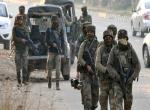
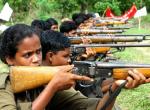
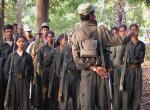

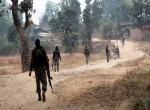
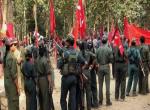
Post new comment